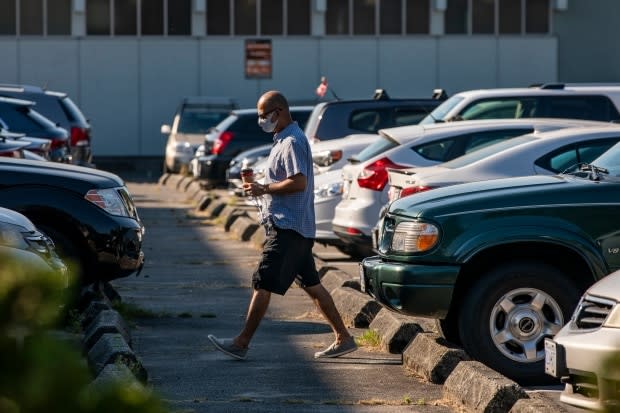Judge tosses B.C. dads' application for stricter COVID-19 protocols in schools
A bid by two dads to force the provincial government to implement mandatory masks and strict physical distancing in classrooms has been rejected by a B.C. Supreme Court judge.
Bernard Trest and Gary Shuster filed an application in August for an injunction, arguing that without tougher COVID-19 safety measures, B.C.'s plan for reopening schools "not only endangers the lives of students and teachers, but also that of the broader community."
But in a Sept. 30 judgment, Justice Jasvinder Basran dismissed that application, writing that the two parents have not laid the necessary groundwork for a case showing they've suffered irreparable harm as a result of the government's decisions.
The judge said the public interest is best served by relying on the advice of Provincial Health Officer Dr. Bonnie Henry and her team, who have supported the government's reopening guidelines.
"The evidence before me shows that their guidance, advice and policies such as the Restart Plan are firmly rooted in current scientific knowledge and best practices. The fact that some of this advice is not universally accepted is insufficient to conclude that the government has clearly chosen the wrong approach in terms of the public interest," he wrote.
On the question of masks, Basran noted that face coverings are currently required in hallways and other high-traffic areas of schools.
He said a blanket mandatory mask policy covering all school areas might be counterproductive because it "could detract from the effectiveness of more effective means of limiting transmission" like hand-washing and physical distancing.
"The evidence shows that public health officials thoughtfully and comprehensively considered the use of masks in schools. They considered the research and current scientific information regarding the use of masks and concluded that some masking in schools was required, but a widespread mandatory masking policy is not necessary at this time," Basran wrote.
As for physical distancing measures, the judge said that the creation of learning groups of 60 to 120 students who aren't required to keep a two-metre distance from each other "is based on sound scientific advice applied in conjunction with the need to provide children with an education."
No requirement to attend school in person
Trest, who has a son in the Surrey school system, and Shuster, whose daughters go to school in Vancouver, both live with immunocompromised family members.
Trest and his 10-year-old son Max have asthma triggered by viral infections, while Shuster's wife has cancer. They told CBC this summer that they feared their children could bring home potentially fatal infections with the novel coronavirus.
"I don't want to put my wife at risk and I don't want my kids to … walk around the rest of their lives thinking, 'I injured my parent,' " Shuster said in August.

But Basran notes that both the Surrey and Vancouver school districts offer options for remote learning that would allow the Shuster and Trest children to learn from home.
"There is no requirement for their children to attend school in person," he said.
Basran acknowledged that Trest wants his son to be in class so he can participate in a specialized program for gifted children, but said that preference isn't enough to mandate masks and physical distancing across the board.
"Mr. Trest's son is certainly entitled to receive an education, but he is not entitled to attend a specific in‑person program on terms that are not consistent with prevailing scientific knowledge and best practices," Basran wrote.
The return to in-class learning this fall has prompted anxiety in parents and teachers across the province, and dozens of potential COVID-19 exposure events have been reported in schools.
But in Henry's most recent modelling presentation on the pandemic's effects in B.C., she said opening schools has not caused an increase in transmission of the virus.
She said school-age children account for less than 10 per cent of new cases, a percentage that has remained relatively steady throughout the pandemic.

